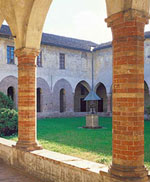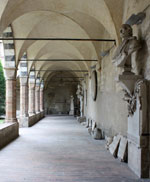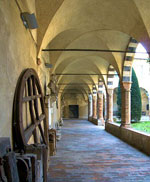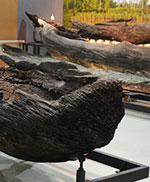Civic Museum of Crema and the Cremasco
| |
|
|
| |
Crema has always been protected by water: the river Serio in the east and the Moso marsh in the north-west. " ese were very good natural defences and worked so well that the emperor Frederick I Barbarossa had to struggle to conquer Crema (1169) and Venice decided to make the town a stronghold against Milan (1450). Crema lays on a hillock between two paths along two di$ erent crests: the Serio (northsouth) and the Moso (east-west). " is favourable position helped developing the town and its territory. Little is known of the ! rst citadel, except that it was surrounded by defences (girulus). " e course of the two Frederick’s moats, the Rino and the Crema (that still existed until the Second World War) is known as well. " e Venetian walls are almost completely preserved, together with parts of the moat surrounding the castle (demolished in the 1800s) and other parts of the bases of the walls. " e Venetian bastions were razed to the ground in the 1800s. " e two Frederick’s moats surrounded the centre of the town and two districts. " e Venetian enlarged the town including in it the other two districts and some areas (already occupied by convents – corpi santi). " e building that nowadays houses the museum was the St. Augustin Convent and it was build on the Rino. As a reminder there are the name of the alley and the mark of a face. " e name Valera street indicates a valley towards the river Serio. |
|
| |
|
|






